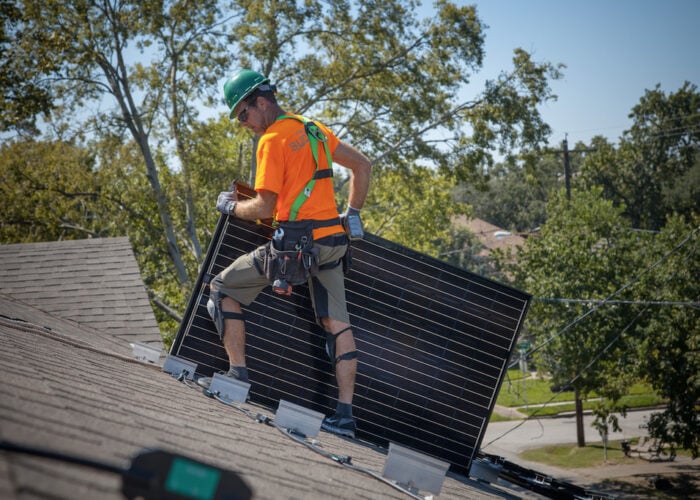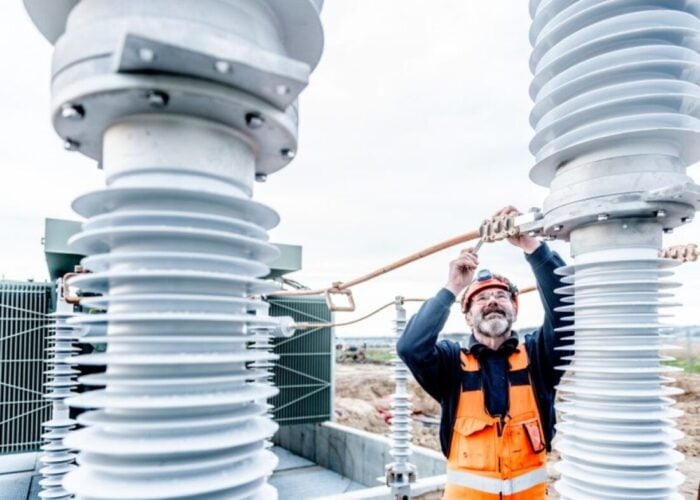TRUMPF’s TruMicro Series of ultra-short pulse lasers are claimed to be lowering the manufacturing cost of photovoltaic cells as well as enhancing their performance. The small and compact TRUMPF TruMicro Series 3000 with wavelengths of 1064 and 532 nanometres are designed for P1, P2 and P3 patterning. Thanks to their high pulse-to-pulse stability, these diode-pumped solid-state lasers achieve very good processing results. They can also be easily integrated into existing systems because of their advanced cooling design.
Problem
Unlock unlimited access for 12 whole months of distinctive global analysis
Photovoltaics International is now included.
- Regular insight and analysis of the industry’s biggest developments
- In-depth interviews with the industry’s leading figures
- Unlimited digital access to the PV Tech Power journal catalogue
- Unlimited digital access to the Photovoltaics International journal catalogue
- Access to more than 1,000 technical papers
- Discounts on Solar Media’s portfolio of events, in-person and virtual
The patterning of thin-film cells made from Cu (In, Ga) (S,Se)2, or CI(G)S, presents a particularly high challenge for the laser process. The same applies to the structuring of molybdenum. For this application, nanosecond lasers are still used but picosecond lasers are claimed to offer a far better solution. Maximising cell efficiency is the result of extremely precise and fine surface structuring and these lasers do this far better and more cost effectively than alternative processes. To protect thin-film solar modules against unfavourable environmental influences – especially against moisture – a width of approximately 10mm of the layer system is ablated along the edge and covered with laminated film. The traditional method employed is sandblasting but TRUMPF TruMicro lasers are claimed to provide a far more suitable process.
Solution
In the production of solar modules from amorphous silicon (aSi) or cadmium telluride (CdTe), conductive and photoactive films are deposited on large substrate areas, such as glass. After every deposition, the laser subdivides the surface so that the cells created are automatically switched in series by the process sequence. In this way cell and module tensions, depending on the cell width, can be set. With these lasers, the material is ablated with ultra-short pulses without significant heating of the process edge zone. This prevents cracking, melting and exfoliation of the layers. TRUMPF Series 5000 picosecond lasers are ideal for this task. They have a wavelength of 1030nm for structuring molybdenum and 515nm for processing photoactive material and patterning the front of the contact. The transparent conductive oxides are usually processed with lasers in the infrared wavelength. At typical feed rates, repetition rates of over 100kHz result. An optimised pulse-to-pulse overlap makes for a clean kerf and minimises negative heat effects. The TruMicro 7050 is recommended for edge deletion applications which can process large areas at production speed, reliably and securely. It generates pulses with 30 nanoseconds duration at an average power of 750W.
Applications
P1, P2 and P3 patterning as well as edge deletion and other process steps.
Platform
TRUMPF TruMicro picosecond lasers have output power up to 50W, which significantly reduces process costs. The simple scalability of the laser output enables a higher production capacity to be achieved. The high beam quality in the ultra-short pulses significantly improves solar cells efficiency. This will result in a significant reduction of the ‘per Watt’ cost of solar cell performance in the future.
Availability
Currently available.







